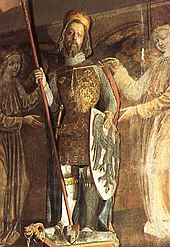

The history of Christianity in the Czech lands began in the 9th century. Moravia was the first among the three historical regions of what now forms the Czech Republic whose ruling classes officially adopted Christianity, between the 830s and the 860s. In 845 Bohemian chieftains or duces also converted to the new faith, but it was just a short-lived political gesture (next year they returned to paganism). The real beginning of efforts to promote Christianity in Bohemian territory has to be placed in the period after 885. Moravia was the earliest center of the Old Church Slavonic liturgy after the arrival of Constantine (Cyril) and Methodius in 863, but their opponents, mainly priests of German origin, achieved the banishment of their disciplines in the 880s. Bohemia became the center of Christianization following the fall of Moravia in the early 10th century. Changes in burials and the erection of churches throughout the Czech lands demonstrate the spread of the new faith in the 10th century.
Two dioceses (the bishoprics of Prague and Olomouc) came into being by the end of the 11th century, but the system of local parishes only strengthened in the 12th century. The dukes and wealthy noblemen also set up a number of Benedictine, Cistercian, and Premonstratensian monasteries in the 11th and 12th centuries.